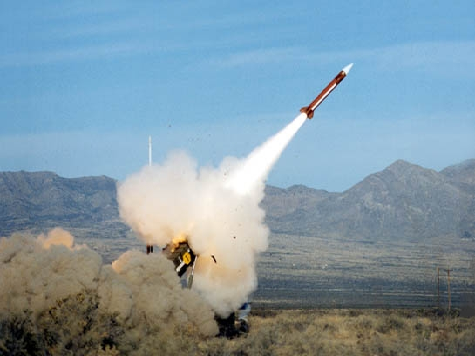
President Barack Obama has portrayed the immediate impact of the sequester cuts as a doomsday scenario full of pink slips for teachers. The President also warned about longer TSA security lines at the airport as well as Capitol Hill janitors and security guards who could get a pay cut. Both claims were called out by the Washington Post and Republicans are charging the president for attempting to blame GOPer’s for problems that never came to fruition as a result of the sequester.
On the other hand, President Obama is not campaigning about the threats to national security that arise from the sequester cuts. In fact, after North Korean leader Kim Jong-un threatened to attack the United States with “lighter and smaller” nuclear weapons, White House Press Secretary Jay Carney Told reporters last Thursday, “I can tell you that the United States is fully capable of defending against any North Korean ballistic missile attack.”
According to a House Armed Services Committee (HASC) staffer, the sequester cuts will have deleterious effects to the U.S. missile defense and nuclear deterrent.
President Obama slashed the U.S. Missile Defense Agency’s projected budget over the next four years by $3.6 billion. This cut is on top of the $1.4 billion his administration reduced from the MDA between 2009 and 2013. That was based on the baselines that were in place by the Bush administration. There are not as many missile defense interceptors, because of billion in cuts made by the Obama administration since 2009.
In terms of capabilities, the numbers mean 30 ground based midcourse defense interceptors as opposed to 44 that would have been deployed in California and Alaska. These ground interceptors are the first line of defense against a long-range missile attack from North Korea.
One short term effect of the sequester that has some on Capitol Hill worried is the Air Force is in a position that may force them to cycle back the country’s sole warning capabilities of incoming missiles. The system is composed of large radars and satellites operated by primarily the Air Force.
As a result of the sequester, according to the HASC staffer, the radar warning system may only be able to function for eight hours a day as opposed to 24 hours. The circumstances has military experts concerned, as the radars may not be looking for dangerous ballistic threats in the right place at the right time.
Retired Navy Captain Randy Duncan specifies other missile defense cuts President Obama put forth in the sequestration:
The next-generation Standard Missile-3 (SM-3) has also been a target of significant cuts, this despite two high-profile, successful tests of the interceptor this spring and summer.
Currently, the U.S. and Japanese navies are employing more than 130 first-generation SM-3s, but the upgraded missile, which is set to roll off production lines in 2015, offers enhanced capabilities to protect America and its allies.
MDA’s original plan was to buy 62 SM-3 “I-Bs” but in his 2013 budget President Obama cut that number to a meager 29 and sliced the I-B budget in half. The timing could not be worse considering that commanders in the field are saying that our current inventories of SM-3s aboard Aegis ships are already insufficient. A recent classified STRATCOM exercise, reported by InsideDefense.com, confirmed the assertion of a ballistic missile shortfall.
Most significantly, these cuts to GBIs and SM-3s do not take into account the prospect of sequestration. In a letter to Congress last month, Panetta warned that sequestration would result in an additional “23 percent cut in weapons program would drive up unit costs and lead to reductions in quantity of one third or more.”
The sequester is not the first time the Obama administration cut back on the country’s nuclear defense systems. If the North Koreans launched a missile at the U.S., the missile defense system in place to first respond is the Ground-based Midcourse Defense system (GMD system),the system the Bush administration deployed. The system should be bigger and more modernized and there should be more interceptors than there are.
The actual defense against a nuclear missile attack is primarily military personnel. While there are contractors who run some of the systems and generally are there to help, the trigger pullers, are always the military. However, the individuals who maintain the country’s nuclear defense will be cut. The longer maintenance is ignored, the more likely U.S. nuclear defense capabilities will fall in disrepair.
Additionally, since 1992 American nuclear warheads have not been tested and rely solely on computer models to determine if the current stockpile may need an upgrade.
The Clinton administration’s “Stockpile Stewardship” program was supposed to ensure that U.S. nuclear warheads were reliable, safe, and secure absent nuclear testing. The policy never changed since the Clinton years and the Obama administration now wants to officially bring back the comprehensive test ban.
Furthermore, when a flight test is conducted to examine a missile delivery system, a performance failure could mean less funding from Congress for the program later on.
Given the ban on nuclear missile testing, the worse case scenario would be that the weapon wouldn’t perform as expected.
Although some experts in the intelligence community say that North Korea’s ability to launch long range missiles at the U.S. is years away, former International Atomic Energy Agency weapons inspector Olli Heinonen warned, in an interview with the Wall Street Journal, that the intelligence community is not always on target with their speculations.

COMMENTS
Please let us know if you're having issues with commenting.